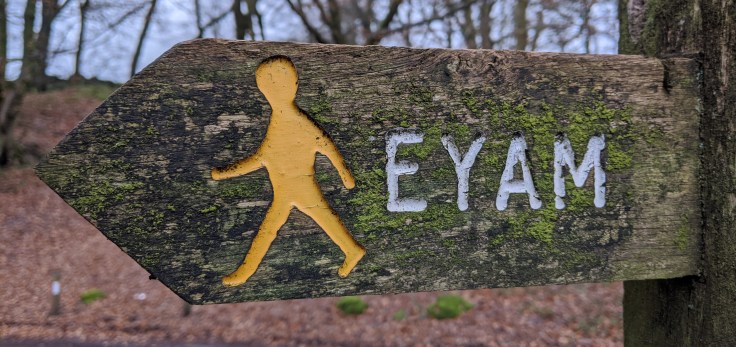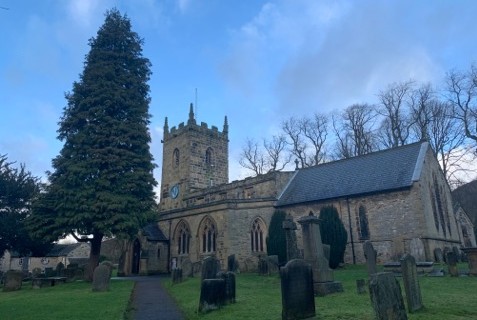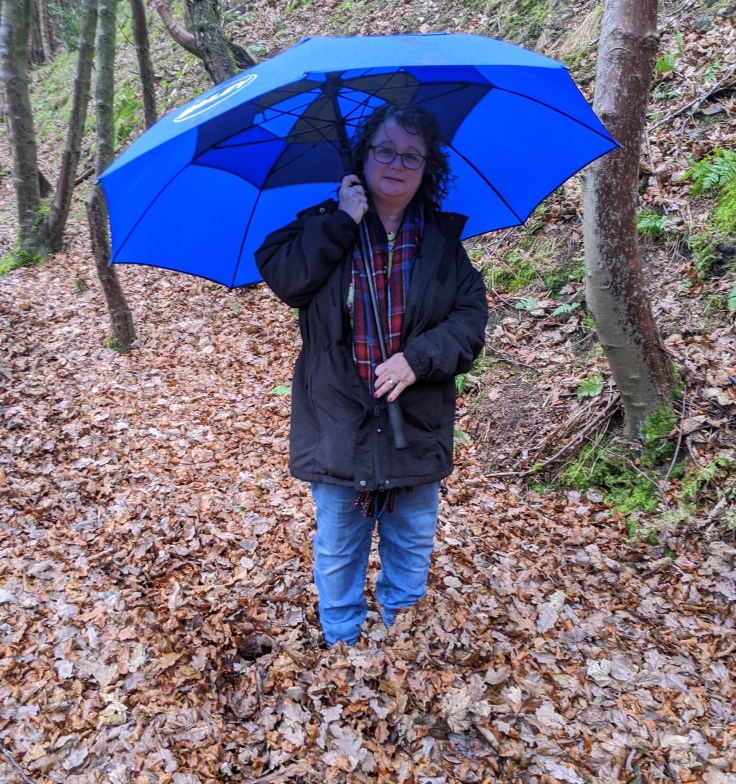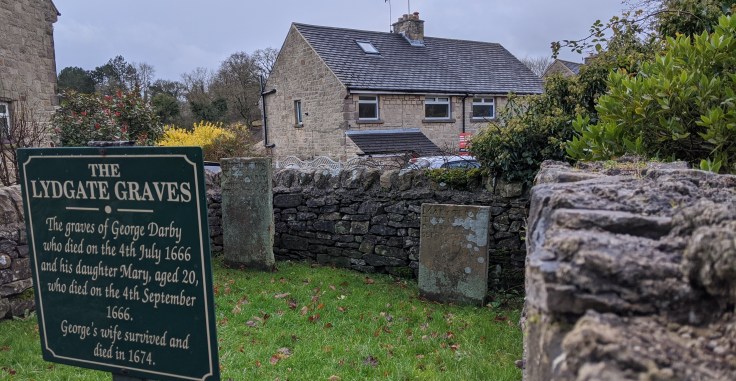The village of Eyam, Derbyshire, is only five miles from the Chatsworth Caravan and Motorhome Club Site, yet for some reason, does not feature in the leaflet supplied at the site showing twelve places to visit in the area.

The story of this village gripped our interest many years ago and we have dragged many a friend and family member around every corner, as almost every building played a part in it’s story. If you are able to walk about five miles of hilly terrain and are in the area, then this is a belting way to spend half a day, especially if you include the pub or tea rooms into the equation.

First stop, Eyam Museum (or it would have been, but it was closed), so we walked into the village church, St.Lawrence’s, where we knew the story is on display, including quite literally via the stained glass window.

How to put the story in a nutshell. In 1665 a tailor’s merchant bought some cloth from Plague ravished London. It was damp, he warmed it by the fire and awoke the fleas that subsequently infected him. Soon after he was dead, followed by occupants of the cottage, followed by neighbours, followed by villagers. What makes this village so special is that the occupants signed their own death warrants by agreeing to quarantine the village to prevent neighbouring villages suffering their awful fate.

Immediately next door to St. Lawrence’s Church is the Plague Cottage, (with a name like that no wonder it came here) where the first victim lived. The current occupier clearly has found a new way to ward off the plague.

Unable to gather indoors together for fear of infection, weekly worship was held at Cucklet Delph. Judging by the cow-pats a different type of worshiper frequents the Delph today

From the back of the church you can walk up the hill, or slowly stagger in our case, up to Mompesson’s Well. This is a natural spring where neighbouring villages left supplies for Eyam and money would be left in the water in the hope of cleansing it.

At this point, the heavens opened up and we were a long way from nowhere. “May as well carry on to Riley’s graves” he says, not telling me this involved a long descent on ‘now’ wet tree roots and stones.

…and I nearly drowned in leaves.

The Riley graves tell the story of just eight days in August 1666 when Elizabeth Hancock buried her husband and six children, dragging each body from the farm buildings in the distance on the picture below.

As you walk the village plaques are displayed on every house where the plague claimed occupants … there are a lot of plague plaques. Occasionally you just stumble across gravestones between modern houses. One of the quarantine conditions was that the dead could not be buried in the churchyard. We love how the history of this place is so evident.

Inside the church is a register of deaths. It is sobering to see a surname appear for the first time then repeatedly appear over the following days. In total, 260 villagers gave their lives to the plague from a population estimated by various sources between 400 and 700. Arguably, the self sacrifice potentially saved the lives of thousands around them and to the North of England. Bizarrely, the village grave digger survived despite handling many infected corpses.

If you enjoy a good read there is also a novel based on this story that we have both read. Year of Wonders by Geraldine Brooks, an international best selling fictional story influenced in main by the characters within the Eyam story, mixed with fictional witchcraft tales that equally featured in the period.
Eyam survived and lives on today with a small selection of independent shops and businesses. As we venture into the local General Stores, (oddly, eyeing up the plague related beers, notably, the 6%, All Fall Down … so named after the ‘Ring a Ring o’Roses’ rhyme), young families stream in after the ‘school run’. “Can I have an emergency wee” asks one of the kids, the shopkeeper smiles, “Go on, you know where it is”.

Other blogs related to this trip
An annual pilgrimage – Bury and Bolton


That was either a large pile of leaves or very short legs……….. 🙂
Thanks – not known about this. Chatsworth is one site that I intend to stay at in due course and Sam likes a good walk so sounds a plan. Mind you, I will warn her about the leaves as she is vertically challenged !
LikeLiked by 1 person
Yup! You guessed it. Little legs 😊
LikeLike
Wow I had no idea. Definitely putting this on my visit list. Love reading your informative blogs, Thanks K xXx
LikeLiked by 1 person
Thank you. It is a good walk, but well worth it. Quite moving.
LikeLike
Wishing you both a very Happy Christmas 🎅🏼👍
LikeLiked by 1 person
Happy Christmas to you both x
LikeLike
Wonderful to see you featuring Eyam. I first went there on a school history trip in 1970 – it is a fascinating place to visit.
LikeLiked by 1 person